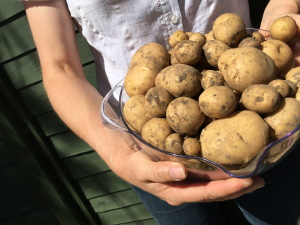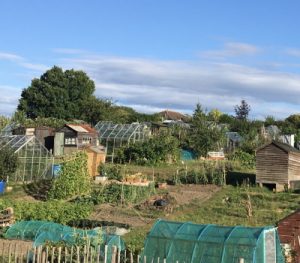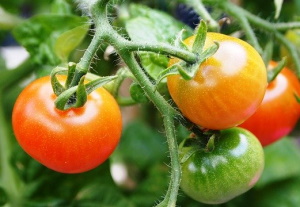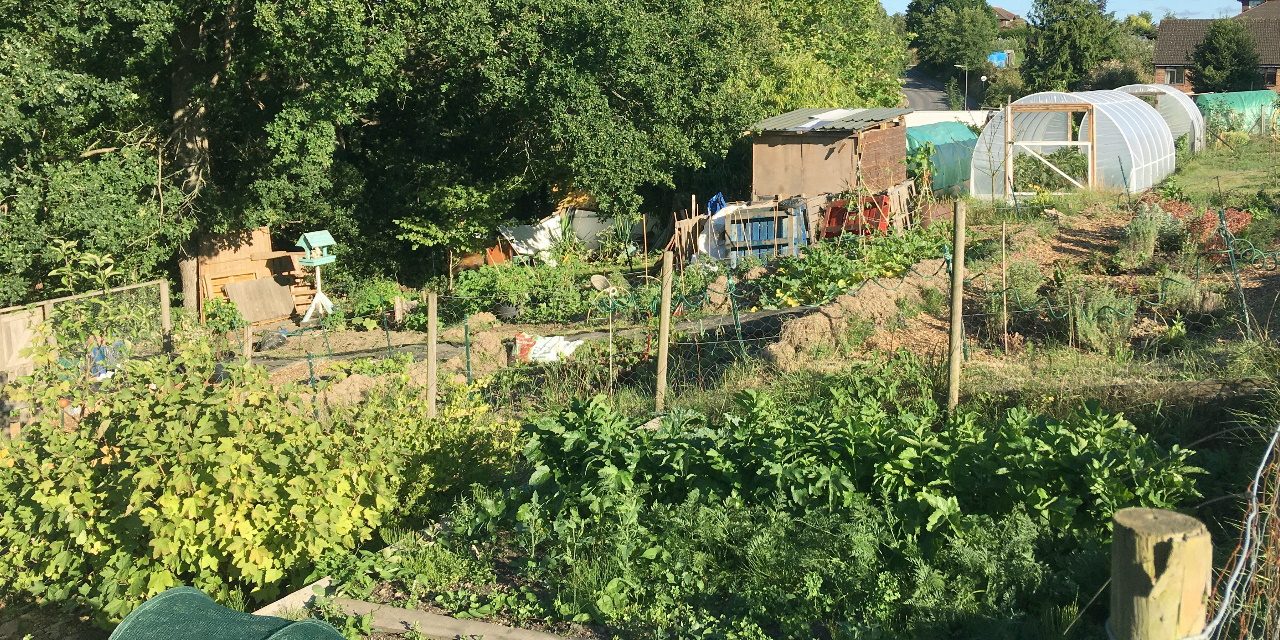We love this year’s theme for National Allotment Week (10 to 16 August) – it’s growing food for health and wellbeing. It’s perfect in a year when more people than ever are discovering the joy of growing and eating their own fruit and vegetables.
Why gardening is good for you
Spending time in the garden has many benefits for both your physical and mental health. It provides exercise and healthy, nutritious food for your body, gets you close to nature, and can help boost your mood while reducing stress and anxiety.
Allotment gardening
 If you don’t have a garden of your own, an allotment gives you space to grow things and to meet other people in your community (at a social distance).
If you don’t have a garden of your own, an allotment gives you space to grow things and to meet other people in your community (at a social distance).
For those who are new to growing veggies, other allotment holders are on hand to give advice on what to grow. They can also tell you which plants you’ll need to protect from visiting wildlife, including birds, rabbits, butterflies and caterpillars, maybe even deer in more rural locations!
What to grow and harvest in August
August is a bumper time for crops. Potatoes, peas, beans, onions, courgettes, lettuce and more are ready to eat. Tomatoes in greenhouses may already be turning red, while those planted outdoors should start changing colour later this month.
If it’s been a successful growing year, you may find you have more than you can eat! Try sharing food with your neighbours, family and friends. There are also many ways to preserve your harvest including storing them in a cool place or freezer (but don’t freeze watery veg like cucumbers and lettuce). You can also dry, pickle or make chutney out of some food.
Love Food Hate Waste has lots of tasty recipes, including advice on storing food and meal suggestions for your leftovers.
August is also a good month to plant your winter vegetables such as cabbages, chard, salad mixes, turnips and purple sprouting broccoli, while the soil is warm and the weather is sunny. If you leave it until September, the young plants won’t be strong enough to survive the colder weather.
Gardeners’ World provide a handy list of allotment jobs for August and other monthly gardening checklists. Don’t forget to plan for watering if you’re going on holiday.
Getting your own allotment
In most places there should be an allotment near you. They’re usually owned by a district, borough, town or parish council, or run by an allotment association. They’re very popular so you’ll probably need to go on a waiting list for one, maybe for a few months or even years.
A standard plot is about 250 square metres, although half plots are also offered at many sites. It generally costs £50 to £100 a year depending on the size of the plot. Contact your local council to find out about availability and joining a waiting list:
- Hastings Borough Council
- Lewes and Eastbourne Councils
- Rother District Council
- Wealden District Council
Another option to consider if allotments aren’t available is community gardening where people come together to grow food or bring a disused site back to life. Social Farms and Gardens has lots of advice and resources on setting up a community garden and finding one in your local area.

Things you need to think about when looking for an allotment are:
- Water supply – how far away is the tap, using water butts and tanks to store rainwater
- Soil conditions – is it sunny or shady, what grows well there, are you taking over a well-maintained plot
- Communal equipment or sheds – is there a shared lawnmower, somewhere to store your tools or do you need to take them with you each time
- Greenhouses – are these permitted to help grow food that needs extra warmth or protection
- Animals – can you keep chickens or beehives
- Access and parking – what to do if you need to take heavy things to your plot
See the RHS beginner’s guide to allotments for advice on getting started and how to tend your plot throughout the year.
Amber’s allotment
We spoke to Amber, who has an allotment in Lewes. She loves the satisfaction of growing produce and being able to share it with friends and family. This is what she told us:
“My allotment is good for my body and mind. It is hard work, but I enjoy every bit of it. I go up as often as I can. February and March are busy times for an allotment holder, so during lockdown I was worried that I wouldn’t be able to do the things needed to ensure that I got good crops this year. However, I took my exercise up there. The free time and energy I gained from not travelling to work (working from home) meant that I was able to tend to it more than usual and do some of the jobs that had been necessary to make my allotment manageable.
“I love to grow the food I enjoy – tomatoes, onions, beetroot, dwarf beans, potatoes, courgettes. I also have a permanent fruit corner with rhubarb, raspberries, strawberries, gooseberries, blueberries and tayberries happily growing and producing fruit, some years in abundance.
“I tend to walk around snacking on the fruit as I work so not much gets home! The flavours are incredible, nothing like shop-bought produce.”
Lots of people around the country have been sharing their own allotment stories. You can watch them on the National Allotment Week Facebook page.
Best of luck with growing your own fruit and veg!




